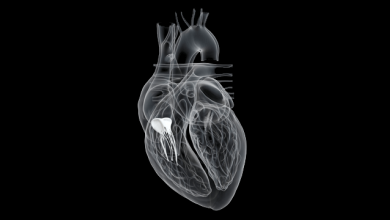Search results
Author(s):
Mehmet Ali Elbey
,
Luis Augusto Palma Dallan
,
Guilherme Ferragut Attizzani
Added:
3 years ago
In the article by Elbey et al. entitled “Value of MitraClip in Reducing Functional Mitral Regurgitation” (US Cardiology Review 2019;13(1):30–4. https://doi.org/10.15420/usc.2018.19.1), the following correction should be made for the second author:
“Luis Augusto Palma Dalan” should be “Luis Augusto Palma Dallan”.
The authors apologise for this error.
View more
Author(s):
Howard C Herrmann
Added:
3 years ago
Mitral regurgitation (MR) is most often caused by degenerative disease of the leaflets or develops functionally as a consequence of left ventricular disease (see Figure 1). Patients with severe MR have dyspnea on exertion, fatigue, and, when associated with left ventricular dysfunction or pulmonary hypertension, reduced survival.1 Therefore, surgery to repair or replace the mitral valve is…
View more
Author(s):
Mehmet Ali Elbey
,
Luis Augusto Palma Dallan
,
Guilherme Ferragut Attizzani
Added:
3 years ago
The field of mitral valve disease diagnosis and management is in constant change. New understanding of disease pathology and progression, with improvements in and increased use of sophisticated imaging modalities have led to more complex treatments. Transcatheter mitral valve repair with a MitraClip device is resulting in good outcomes in patients with primary mitral regurgitation who are at high…
View more
Author(s):
Vikram Sharma
,
Arpit Sothwal
,
Jai Parekh
,
et al
Added:
1 year ago
Author(s):
Justin P Sheehy
,
Adnan K Chhatriwalla
Added:
3 years ago
Author(s):
Suzanne J Baron
Added:
3 years ago
In the wake of transcatheter aortic valve replacement revolutionizing the treatment of aortic stenosis, sizeable interest has arisen in the development of percutaneous technologies to treat patients with mitral valve disease. Thus, when a percutaneous method of edge-to-edge mitral valve repair (TMVr) using the MitraClip device (Abbott Vascular) was introduced, this device was met with…
View more
Author(s):
D Scott Lim
Added:
3 years ago
D Scott Lim (UVA Health System, Charlottesville, VA, US) discusses the most recent outcomes with MitraClip™ (NTR/XTR) System in primary mitral regurgitation.
Questions:
1. How prevalent is primary MR and what is the current guidance for Mitraclip™ use in these patients?
2. What are the objectives of EXPAND?
3. Can you describe the study design & inclusion criteria ?
4. Could you describe your…
View more
Interventional Echocardiography
Author(s):
Roy Arjoon
,
Ashley Brogan
,
Lissa Sugeng
Added:
3 years ago
Article
Author(s):
Kelly H Schlendorf
,
Jared O’Leary
,
JoAnn Lindenfeld
Added:
3 years ago
Mitral regurgitation (MR) is common in industrialized countries, with a prevalence of about 2% in the general population and about 9% in people over 75 years old.1,2 MR is classified as primary/degenerative when it results from a structural abnormality of the valve apparatus, or secondary/functional when it results from a disturbance of ventricular or annular geometry and/or function that impairs…
View more
Author(s):
Shu-I Lin
,
Mizuki Miura
,
Francesco Maisano
,
et al
Added:
3 years ago
Moderate-to-severe tricuspid regurgitation (TR) is estimated to affect more than 1.6 million people in the US. However, fewer than 8,000 tricuspid valve operations are performed each year.1,2 There is clearly an unmet need for a tricuspid valve (TV) intervention. There has been rapid development in the field of transcatheter aortic and mitral valve interventions and percutaneous management of…
View more














